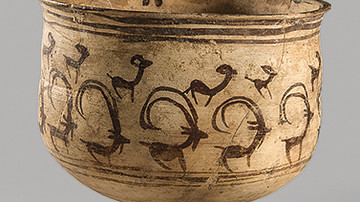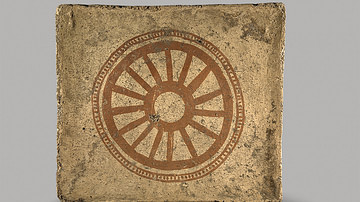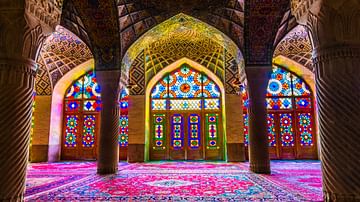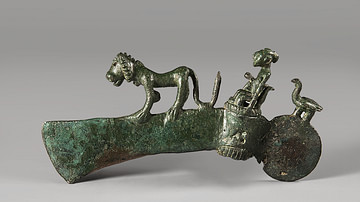Illustration
Rock carving in Bisotun (Iran) from the Seleucid era depicting Hercules lying on the back of the lion skin and holding a bowl in his left hand. According to its Greek inscription it was carved in 148 BCE and dedicated to a local Seleucid governor called Kleomenes.
Inscription says: "In year 164, in the month of Panemos, Hyakinthos son of Pantauchos dedicated this statue of Herakles Kallinikos "Glorious in victory" for the safety of Kleomenes, the governor of the Upper Satrapies."
About the Author
Cite This Work
APA Style
Raddato, C. (2021, November 01). Bisotun Hercules, Iran. World History Encyclopedia. Retrieved from https://www.worldhistory.org/image/14769/bisotun-hercules-iran/
Chicago Style
Raddato, Carole. "Bisotun Hercules, Iran." World History Encyclopedia. Last modified November 01, 2021. https://www.worldhistory.org/image/14769/bisotun-hercules-iran/.
MLA Style
Raddato, Carole. "Bisotun Hercules, Iran." World History Encyclopedia. World History Encyclopedia, 01 Nov 2021. Web. 14 Apr 2025.








